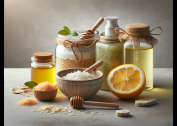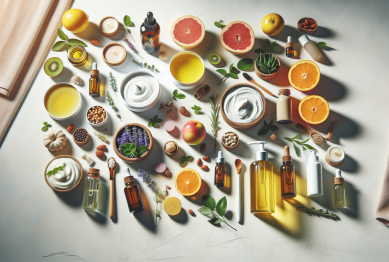In the world of creativity, we often associate freedom, spontaneity, and chaos with the best ideas. However, routine—often seen as the antithesis of creative exploration—can actually serve as a powerful catalyst for creativity. While it may seem counterintuitive, incorporating routine into your daily life doesn’t have to stifle your creative flow. Instead, it can create the space and structure needed for creativity to thrive.
We’ll explore how routine can fuel creativity, why it’s important to find balance, and how routine can serve as a platform for innovation and new ideas.

How Routine Can Free Up Mental Space for Creativity
At first glance, routine might appear rigid, constraining our time and energy. However, routines can actually free up mental space. Here’s how:
Reducing Mental Clutter
One of the biggest barriers to creativity is mental clutter—constantly making decisions about trivial matters, like when to eat or how to organize your day. Routine helps streamline decisions and eliminates the mental energy needed to manage the mundane, leaving more cognitive space for creative thinking. When we don’t have to think about the basics, our mind is free to focus on more complex, creative tasks.
Establishing a Predictable Environment
A predictable routine creates an environment of stability, which allows us to take more creative risks. When our basic needs are met through routine, we can take greater creative risks, knowing that we have a stable foundation from which to explore. A sense of security can actually reduce anxiety and foster confidence—critical elements for creative risk-taking.
Facilitating Flow States
Routine can help establish predictable windows of time for focused work. This consistency allows for the development of “flow”—a highly productive state in which creativity can flourish. When we schedule regular time for creative work, our minds learn to enter into a flow state more easily, helping us to achieve higher levels of innovation and productivity.
The Role of Routine in Creative Habits
Creative work often requires sustained effort and discipline. While spontaneity and bursts of inspiration are important, routine can help cultivate habits that support long-term creativity. Here’s how:
Building Creative Habits
Routine allows us to build habits that support creativity, such as setting aside time each day to write, draw, or brainstorm. These habits help reinforce consistency in creative practice, ensuring that we don’t rely solely on inspiration. Over time, these regular practices make creativity a more automatic part of our lives, rather than something sporadic or unpredictable.
Encouraging Time for Exploration
When routine creates space in our day for creativity, we can also allow ourselves time for exploration and experimentation. Scheduling time for trial and error—without the pressure of needing immediate results—encourages creativity. Routine helps us prioritize creative exploration, knowing that it is just as important as other tasks in our daily life.
Reducing Procrastination
A structured routine combats procrastination by setting aside regular time for creative work. When creative tasks are scheduled into our routine, we treat them with the same importance as any other task. This consistency prevents distractions from derailing our creative endeavors, helping us stay on track.
How to Make Routine Work for Your Creativity
While some routines can feel constricting, there are ways to adapt them to better support your creative process. Here are some strategies for making routine a creative catalyst:
Create Flexible Routines
Routine doesn’t have to be rigid. Incorporate flexibility into your schedule, allowing for spontaneity when needed. For example, set aside regular time for brainstorming or creative thinking, but allow space for unscheduled exploration. This balance between structure and freedom helps you remain productive while also embracing the fluid nature of creativity.
Prioritize Creativity
Make creativity a non-negotiable part of your daily routine. Whether it’s setting aside 30 minutes to sketch, write, or problem-solve, consistently dedicating time to creative endeavors reinforces their importance. The more you make creativity a part of your routine, the easier it becomes to generate new ideas.
Incorporate Creative Rituals
Rituals—such as morning meditation, a cup of coffee before a brainstorming session, or a walk before writing—can support creativity within a structured routine. Rituals signal to your brain that it’s time to switch into a creative mode. Over time, these rituals help trigger creative flow, allowing for more innovative thinking.
Mix Routine with Novelty
While routine is important, introducing small variations can keep your creative process fresh. Try changing your environment, experimenting with different work methods, or exploring new sources of inspiration. Routine combined with novelty keeps creativity energized without feeling stifled.
Allow Rest and Recharge Time
Creativity requires energy, and sometimes the best way to nurture it is by taking breaks. Rest is essential for maintaining creativity. Incorporate rest periods into your routine to allow your mind to recharge, ensuring that you don’t burn out. Balanced routines that allow time for both work and rest lead to sustained creativity.
Can Routine Be a Double-Edged Sword?
While routine can indeed foster creativity, there are some downsides to over-relying on it. When routines become too rigid or monotonous, they can stifle inspiration and create a sense of burnout. Here’s how to strike the right balance:
Avoiding Over-Scheduling
Over-scheduling yourself with too many routines or deadlines can lead to stress and creative exhaustion. Ensure that your routine leaves room for flexibility, downtime, and exploration. Creative work thrives in environments that allow for breaks and spontaneous ideas.
Preventing Creative Stagnation
Relying too much on routine can lead to creative stagnation if you aren’t challenging yourself or stepping outside your comfort zone. Ensure your routine includes opportunities for growth, such as new challenges, learning experiences, or collaborations with others.
Allowing Space for Creative Freedom
While routine is beneficial, it’s essential to remember that creativity thrives on freedom. Sometimes, the most innovative ideas come from unscheduled moments or unplanned activities. Give yourself permission to step away from routine and embrace unpredictability when needed.
Conclusion
Routine can be a powerful creative catalyst when used strategically. By creating consistent habits, reducing distractions, and prioritizing time for reflection and experimentation, routine helps pave the way for creativity to flourish. However, balance is key. A routine should provide structure without becoming so rigid that it stifles your creativity. When routine and freedom work together, they can create a fertile environment for ideas to grow and evolve.
Next time you feel creatively blocked or uncertain, consider incorporating routine into your day, but don’t forget to leave room for the unexpected. By finding the right balance, you can harness the power of routine to fuel your creativity and innovation.
References:
-
-
Harvard Business Review. “The Cognitive Benefits of Thinking Out Loud.” Harvard Business Review.
-
Forbes. “How Thinking Out Loud Enhances Creativity.” Forbes.
-
Psychology Today. “The Power of Verbalizing Thoughts.” Psychology Today.
-









